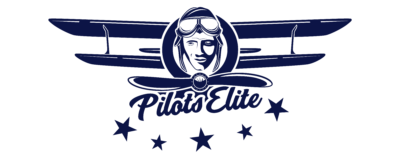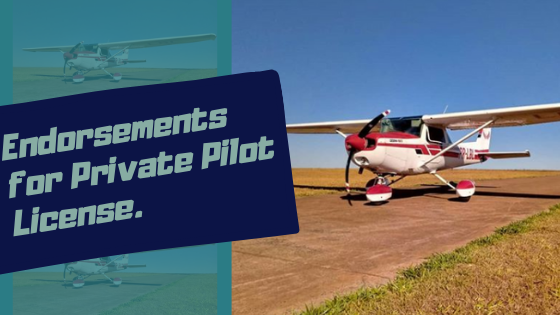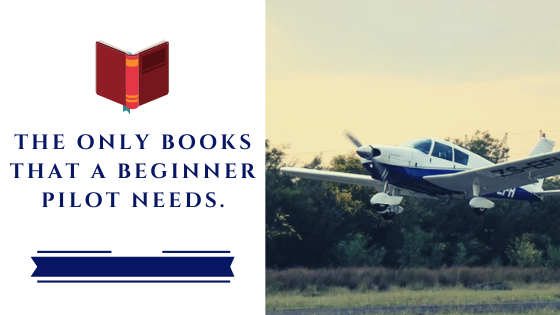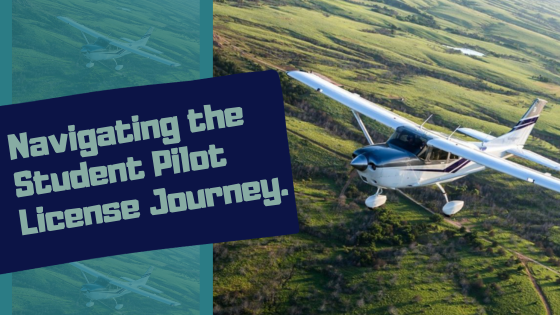Drill down: Private Pilot License VS. Commercial Pilot License.
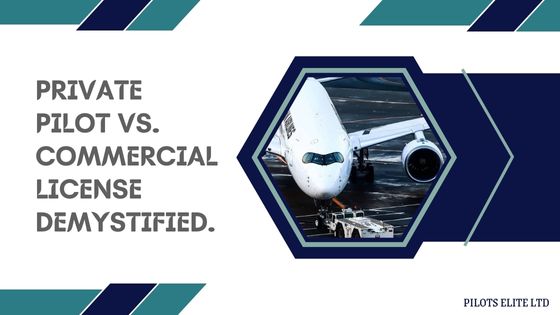
On a lazy Sunday evening, you’re on your porch and scrolling through your phone.
You see an ad for getting your pilot licenses from a flight school.
You were thinking of getting your pilot license sometimes, but this time, you’re determined to get it—or at least you want to do your research.
YoI often notice you are confusedbout Private pilot license (PPL) and commercial pilot license (CPL).
What are the differences between a private pilot license and a commercial pilot license?
A private pilot license is similar to a driving license. A private pilot can fly an airplane to any destination without any restriction.
The only restriction for private pilots is they cannot fly into Class A airspace.
On the contrary, a commercial pilot with an instrument rating can fly into Class A airspace.
However, that is not the primary difference between a commercial pilot license and a private pilot license.
A private pilot licensee cannot fly for hire or compensation.
A commercial pilot licensee hacan getaid for transporting passengers and goods.
A commercial pilot can work as a professional pilot, but a private pilot is restricted from working and receiving fees for flying passengers.
A private pilot can only fly for recreation and can operate an airplane with passengers.
To begin the discussion, let’s understand the requirements for these two licenses.
Private pilot license requirements:
- At least 17 years old (16 years old to start flight training)
- Fluent in the language in which flight operations are conducted
- Minimum of 40 hours of flight time, including at least 20 hours of flight training with a certified instructor and 10 hours of solo flight time
- Pass a medical exam and obtain a medical certificate
- Pass a written knowledge test
- Pass a practical flight test with an FAA examiner.
FoYou can click here foretailed requirements for a private pilot license, you can click here.
CPL Requirements:
- At least 18 years old
- Fluent in the language in which flight operations are conducted
- Hold a PPL or a Certificate of Completion of a PPL program
- Minimum of 250 hours of flight time, including 100 hours of pilot-in-command time, 50 hours of cross-country flight time, and 20 hours of instrument training
- Pass a medical exam and obtain a medical certificate
- Pass a written knowledge test
- Pass a practical flight test with an FAA examiner.
Before I talk about the commercial pilot license requirements, I want to mention the commercial pilot training requirements.
First, you must identify whether you are eligible to become a commercial pilot.
If you are not eligible to become a commercial pilot and fly 150 hours only to see that you can’t apply for a commercial pilot license, you will only waste your money.
Before you begin commercial pilot training, ask yourself why you want to become a commercial pilot.
You must undergo commercial pilot training if you are determined to work as an airline pilot.
Do you have no interest in working in the airline and intend to fly for recreation?
A private pilot license and some additional rating will do the job adequately.
In addition to the above requirements, CPL candidates must complete additional training, including multi-engine and night flight times. CPL holders are also eligible to receive compensation for their services as pilots, whereas PPL holders are not.
Differences in cost to get PPL vs. CPL:
The cost of obtaining a private pilot license and CPL can vary based on several factors, such as the location, type of flight school, aircraft used, and the student’s experience level. However, CPL is generally more expensive than PPL due to the higher required flight hours.
The estimated cost of obtaining PPL in the United States can range from $8,000 to $15,000, depending on the factors those are mentioned above. This includes flight training, ground school, instructor, and aircraft rental fees.
On the other hand, the estimated cost of obtaining CPL in the United States can range from $40,000 to $80,000, depending on the factors thntioned above. This includes the cost of flight training, ground school, instructor fees, aircraft rental fees, and additional training required for multi-engine flight and instrument rating.
These costs are estimates and can vary widely depending on an individual’s training pace and flight experience. Additionally, some flight schools may offer financing options or scholarship programs to help offset the cost of training.
Overall, obtaining PPL is a more affordable option for individuals who want to fly for personal reasons, while obtaining CPL is a significant investment for those who wish to pursue an aviation career.
How much is the cost of commercial pilot training?
The cost of commercial pilot training varies from country to country. Each country has different flight hour requirements for this license. A student pilot will have to pay to fly for more hours.
If you are in the Philippines, muste to pay for a fltal offlight 150 hours.
A student in India has to pay for 220 hours of flying time to get a commercial pilot license.
As the number of hours calculates the commercial pilot training cost, you will undoubtedly have to pay more in India than in the Philippines.
Nevertheless, the cost of pilot training also varies from school to school.
Commercial pilot training consists of ground school and several other associated costs. Different schools will chavariousrent rates for flying hours and ground class hours. Some schools will charge you for books and supplies; many will include the price in the complete package.
Thus I, can only give you than idea of e approximate cost idofhe pilot training course.
I can merely give you an approximate course cost, and from there, you can calculate your commercial pilot training cost.
For example, if you are training to become a commercial pilot in the Philippines, you must fly for at least 150 hours. So I,f you fly at 200 USD per hour for 150 hours of flying time, you will pay approximately 30,000 USD.
However, this is only the cost of flying a Cessna 172 aircraft with a flight instructor. The flight instructor’s fee is also 200 USD.
It is by no means the exact price. As a student pilot, you must pay additional fees.
Did you already forget about the ground classes?
You have to pay extra for your ground classes in a flight school. hourly rate of The ground schclassesrate varies from one school to another.
So I can’t give you the exact idea.
However, As I suggest to anyone willing to take commercial pilot training in the Philippines, the cost may vary between 45,000 USD to 55,000 USD.
It is just a rough idea.
Differences in training and certification process:
The training and certification process for a PPL and CPL differ in several ways:
Medical Exam: Both PPL and CPL candidates must pass a medical exam and obtain a medical certificate. However, CPL candidates are held to higher medical standards than PPL candidates.
Ground School: PPL candidates must complete at least 35 hours of ground school training, whereas CPL candidates must complete 250 hours.
Written Knowledge Test: Both PPL and CPL candidates must pass a written knowledge test, but the CPL test covers more advanced topics than the PPL test.
Flight Training: PPL requires at least 40 hours of flight time, including at least 20 hours with a certified flight instructor and 10 hours of solo flight time. CPL requires at least 250 hours of flight time, including 100 hours of pilot-in-command time, 50 hours of cross-country flight time, and 20 hours of instrument training.
Practical Flight Test: Both PPL and CPL candidates must pass a practical flight test with an FAA examiner. The CPL test is more rigorous and includes a broader range of maneuvers and procedures.
Additional Training: CPL candidates must complfurtheronal training, including multi-engine flight time and night flight time, and meet specific cross-country flight requirements.
Certification: PPL candidates who meet all the requirements are issued a PPL certificate. CPL candidates who meet all the requirements are issued a CPL certificate and authorization to receive compensation for transporting.
Overall, the training and certification process for CPL is more extensive and demanding than for PPL, as it requires a higher level of skill and knowledge.
What is commercial pilot training?
Advanced pilot training improves flying skills, and pilots learn to operate an airplane in complicated situations.
Commercial pilot training is the next stage after obtaining a private pilot license. Aspiring pilots get their private pilot license commonly after flying 50 hours.
The requirement for commercial pilot training varies from country to country.
However, one can apply for a commercial pilot license with 150 hours of flight time.
in the PhilippinesOn the contrary, the Indian aviation authority requires its pilots to fly 220 hours before certifying them with a commercial pilot certificate.
Thus t,he stage from a obtaining private pilot license to obtaining a professional pilot license is commercial pilot training.
I will use the example of a Filipino pilot.
This assumes that a pilot student in the Philippines has earned his private pilot license within 50 hours of the actual flight.,
Now this private pilot is willing to get a commercial pilot license.
Then he will have to fly 150 hours to be eligible for a commercial pilot license application.
The hours flown from 50 to 150 is the commercial pilot training stage.
During this stage, a pilot must practice some advanced maneuvers according to the local civil aviation body.
How to obtain a commercial pilot license?
It is necessary to fly the minimum hours the civil aviation body wants in any specific country to obtain a commercial pilot license.
As in India, a pilot has to fly a total of 220 hours to get his commercial pilot license, and in the Philippines, 150 hours will make you eligible to become a commercial pilot.
A vital thing to note is the commercial pilot license comes after the private pilot license.
One must acquire a private pilot license first.
Once a student pilot holds a private pilot license, he has to take commercial ground school.
This ground school syllabus is similar to the private pilot ground school syllabus. Yet the commercial pilot ground school is structured with more advanced and in-depth explanations of specific topics.
If you are willing to fly commercially, you must be ready for any complicated situation in flight.
After they complete the commercial ground schooling, the pilot has to fly more hours in their desired aircraft to build hours.
While building flight hours to meet the civil aviation authority requirement, one pilot must also note how many hours he has flown as a pilot in command and how many hours as a dual.
The Civil aviation regulation also indicates pilots fly minimum PIC hours before applying for a commercial pilot license.
But a reputed flight school will track all the flight hours and how many hours of pilot in command while the private pilot builds their hour.
After completing the minimum hour requirement for a private pilot, you can apply for the license.
You must pass the commercial pilot theory exam and have a flight with a checked pilot.
Once your check pilot is satisfied with your performance, you will be issued a commercial pilot license.
Holding a commercial pilot license will enable you to fly the airplane commercially.
Differences in limitations and privileges.
The limitations and privileges of a PPL and CPL are as follows:
Limitations: PPL holders are not allowed to receive compensation for their flight services, while CPL holders are authorized to receive compensation for their flight services.
Privileges: PPL holders can fly for personal, non-commercial purposes and operate single-engine aircraft in good weather conditions. CPL holders can operate aircraft for compensation and have broader privileges, including the ability to fly multi-engine aircraft and operate in more challenging weather conditions.
Carrying passengers: PPL holders can carry passengers but cannot receive compensation. CPL holders can carry passengers and receive compensation for their services.
International Operations: PPL holders may need additional training and endorsements to operate internationally. CPL holders have the necessary training and qualifications to operate internationally.
Aircraft Weight: PPL holders are limited to operating aircraft with a maximum takeoff weight of 12,500 lbs. CPL holders can operate aircraft with a higher maximum takeoff weight.
Type of Operation: PPL holders are limited to operating aircraft for personal, non-commercial purposes. CPL holders can operate aircraft for commercial purposes, such as aerial photography, surveying, and air taxi services.
In summary, a CPL provides pilots with greater privileges and opportunities for commercial flying, while a PPL is more restrictive and only allows pilots to fly for personal purposes.
What can you do with a commercial pilot’s license?
A commercial pilot license enables a pilot to work for hire and compensation. With a commercial pilot license, one can work full-time as a professional pilot.
Having a commercial pilot license can earn a decent amount of money until you start working on the airline.
To get an airline job with only a commercial pilot license was a thing of the past. Nowadays, with strict regulations and new laws, airlines do not hire fresh commercial pilots.
A commercial pilot licensee has to work his way up slowly to the airliner cockpit.
Yet, some lucky commercial pilots get a job immediately after they graduate from flight school.
Commercial pilots work for decent money to build hours and finally get their dream job.
So working as a professional pilot with a commercial pilot license is not a problem.
But building hours and being in the airline come with many other complications.
Some airlines require a commercial pilot to have at least 500 hours, and others may require 1500 hours.
As well as, airlines might want a commercial pilot applicant to have additional type ratings.
Nevertheless, being hired with a commercial pilot license is vast, with many opportunities in the aviation industry today. Indeed the pay will not be luxurious, but at least you will fly an airplane to have fun in the sky.
Advantages of PPL:
PPL training is less expensive than CPL training, as it requires fewer flight hours.
PPL training can be completed in a shorter time frame than CPL training.
PPL holders can enjoy flying for personal pleasure and take friends and family on flights without any commercial obligation.
PPL holders can earn additional ratings and endorsements to expand their skills and flying capabilities.
Disadvantages of PPL:
PPL holders cannot receive compensation for their flight services and cannot fly as commercial pilots.
PPL holders have limited privileges and cannot fly in adverse weather conditions or operate complex aircraft.
PPL holders cannot operate aircraft for commercial purposes.
Advantages of CPL:
CPL holders can earn a living by flying as a commercial pilots, providing them with a lucrative career.
CPL holders have greater privileges and can operate more advanced and complex aircraft.
CPL holders can fly in adverse weather conditions and operate commercial aircraft.
Disadvantages of CPL:
CPL training is expensive and requires a significant investment of time and money.
CPL holders are subject to strict medical requirements and must maintain a high level of physical fitness.
CPL holders must have a certain level of experience and training to operate advanced aircraft, which may require additional endorsements and ratings.
Overall, the advantages and disadvantages of PPL and CPL depend on the pilot’s personal goals, interests, and career aspirations. A PPL is suitable for pilots who want to fly for their reasons, while a CPL is appropriate for those who wish to pursue an aviation career.
Which is best suited for different career goals and aspirations:
Whether PPL or CPL is best suited for an individual’s career goals and aspirations depends on their specific career aspirations and interests. Here are some considerations to help determine which license is best suited for different career goals:
Flying for Personal Reasons: A PPL is the best option if an individual is interested in flying for personal reasons such as leisure or travel. A PPL provides the necessary skills and qualifications to fly for personal purposes without the need for compensation.
Career as a Professional Pilot: A CPL is necessary if an individual’s career goal is to become a professional pilot. A CPL provides the qualifications and skills needed to fly for compensation and opens up career opportunities such as airline, charter, or corporate pilot.
Career in Aviation Industry: If an individual is interested in pursuing a career in the aviation industry but not necessarily as a pilot, a PPL may still be beneficial. A PPL provides a basic understanding of aviation and can be helpful in careers such as air traffic controller, aircraft mechanic, or aviation manager.
Advancing Skills and Knowledge: PPL and CPL can be valuable for pilots interested in advancing their skills and knowledge. Additional training, endorsements, and ratings can be obtained with both licenses, such as instrument, multi-engine, and type ratings.
In summary, PPL is best suited for individuals interested in flying for personal reasons, while CPL is best suited for individuals pursuing a career as a professional pilot. However, both licenses can help advance skills and knowledge in the aviation industry.
